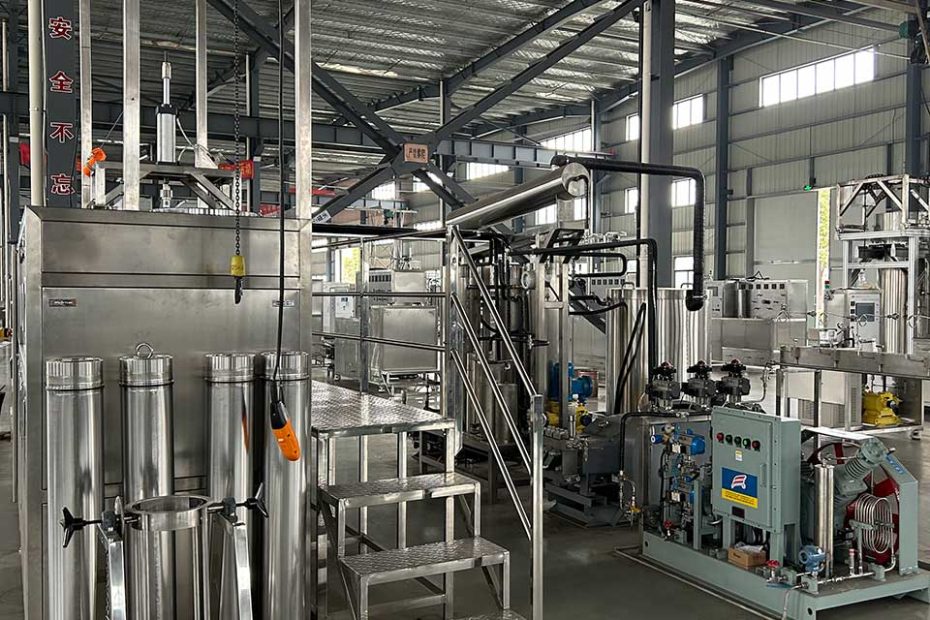In the marijuana and hemp industry, the significance of biomass grind size in maximizing extraction efficiencies is often overlooked. While grind size is commonly described qualitatively, its quantitative impact on extraction cannot be ignored. Controlling this variable is crucial for developing robust extraction methodologies and achieving production-scale reproducibility. Understanding the influence of biomass particle size on extraction efficiency and time is vital for efficient processing and consistent results.
The Impact of Biomass Particle Size on CO2 Extraction Efficiency
Biomass particle size plays a critical role in extraction efficiency, affecting the time required to complete the process. Numerous peer-reviewed studies have highlighted the correlation between particle size and extraction efficiency.
4 Key points to consider
- Increase in Extraction Efficiency: Smaller particle sizes generally result in higher extraction efficiencies, up to a certain point.
- Soybean Seed Study: In a study on seed oil extraction, varying thicknesses of soybean seed flakes were tested. The difference in yield between 0.25mm and 0.81mm flakes with the same solvent quantity was a substantial 46.7%. This demonstrates that extraction conducted on 0.25mm flakes can be completed significantly faster than with 0.81mm flakes.
- Reduction in Diffusion Resistance: Smaller particles offer reduced intra-particle diffusion resistance, allowing the solvent to diffuse more easily into the cellular matrix. The increased surface area further facilitates solvent diffusion.
- Optimal Grind Size Limitation: While smaller particle sizes generally enhance extraction rates, grinding biomass to a cloud of extremely fine dust can lead to issues such as solvent channeling and particle clumping. Solvent channeling creates preferential pathways through the biomass, resulting in uneven extraction rates and reduced efficiency.
Considerations for Solvent Choice and Quality
The choice of solvent used in CO2 extraction, such as supercritical CO2, offers distinct advantages over polar solvents like ethanol. It allows for greater flexibility in grinding biomass to the optimal particle size without compromising product quality.
2 Key points to consider
- Minimizing Quality Changes: Supercritical CO2 extraction process can grind biomass to the desired particle size without concerns about cell lysis and the co-extraction of chlorophyll degradation products. Solvent density modulation ensures consistent and repeatable production outcomes.
- Flexibility in Particle Size: Regardless of the type of cannabis biomass (trim, shake, or flower), supercritical CO2 extraction allows processors to grind the material to the same particle size, ensuring consistent quality output.
Determining the Optimal Grind Size
Processors need to determine the optimal grind size to achieve maximum extraction efficiency. This requires appropriate grinding equipment capable of producing specific particle sizes and conducting optimization tests.
3 Key points to consider:
- Grinding Equipment: Processors must have suitable grinding equipment capable of producing the desired particle size. This can include specialized mills or grinders backed by specific millimeter or micron sieves.
- Extraction Kinetic Curves: Building extraction kinetic curves using the same biomass for consecutive tests based on different particle sizes is essential. These curves help identify the optimal particle size for efficient extraction.
Conclusion
Optimizing biomass grind size is a critical factor in maximizing extraction efficiencies in supercritical CO2 extraction processes. By understanding the relationship between particle size and extraction efficiency, processors can minimize extraction time while avoiding issues such as solvent channeling and clumping. The choice of solvent, such as supercritical CO2, provides flexibility and ensures consistent product quality. Thoughtful processors should prioritize quantitative data regarding grind size and conduct optimization tests to achieve optimal extraction results.
